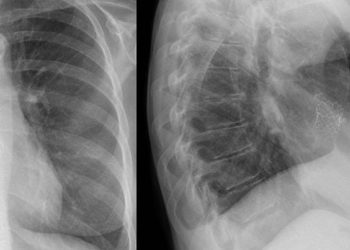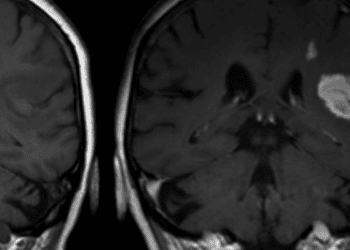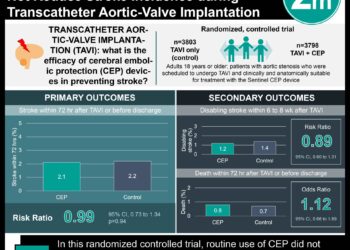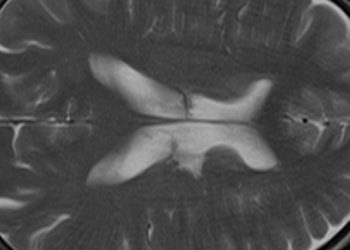Decreased stroke incidence in high-income countries, decreased mortality worldwide (1990-2010)
Image: PD
1. Age-adjusted incidence of stroke has changed worldwide from 1990 to 2010 – decreasing in high-income countries and unchanged or increasing in low- or middle-income countries.
2. Overall global mortality from stroke has decreased during this time period.
Evidence Rating Level: 1 (Excellent)
Study Rundown: Stroke is one of the most common causes of morbidity and mortality worldwide. In the United States, it is currently the fourth leading cause of death annually. However, the burden of stroke and resulting morbidity worldwide has not been assessed. This study was a meta-analysis of 119 studies. From 1990 to 2010, the age-standardized incidence of stroke in high-income countries significantly decreased by 12% by average. In comparison, the incidence of stroke did not significantly change in low- or middle-income countries during this same time period (12% increase, 95% CI -3 to 22%). Mortality rates from stroke significantly decreased worldwide regardless of a country’s income status, but the burden of disease was greater in low- and middle-income countries. The significant majority of new strokes occurred in patients less than 75 years of age.
Stroke is the result of a variety of concomitant and precipitating medical conditions predisposing embolic and/or thrombotic events within the complex vascular network of the brain. Most commonly, stroke is linked with cardiovascular atherosclerotic disease. The ability of medical intervention to intervene and prevent the pathogenesis of stroke is intrinsically tied to the ability to assess and manage risk factors for stroke. This study should serve to inform public health workers on regions where interventions may produce maximal reduction in risk.
Click to read the study in Lancet
Click to read the associated comment in Lancet
Relevant Reading: Stroke
Lead author Dr.Valery Feigin, M.D. speaks to 2 Minute Medicine: Auckland, New Zealand.
“This is the first study to compare incidence and impacts of stroke between countries on a global scale. Now every country in the world has estimates of their stroke burden, based on the best available evidence. The worldwide stroke burden is growing very fast and there is now an urgent need for culturally acceptable and affordable stroke prevention, management and rehabilitation strategies to be developed and implemented worldwide.”
In-Depth [meta-analysis]: This study was a meta-analysis of 119 studies undertaken between 1990 and 2010 – 58 from high-income countries, 61 from low- and middle-income countries. Of these, 55 studies from high-income countries and 14 from middle- and low-income countries were considered to be of high quality studies.
The parameters of interest included age-adjusted stroke incidence, prevalence, mortality, mortality-to-incidence ratio (MIR), and disability-adjusted life-years (DALYs) statistic. All data was stratified based on patient age ≥ or < 75. Comparing data between 1990 and 2010, there was a significant drop in the age-adjusted incidence rate, MIR, mortality, DALYs lost for high-income countries. In middle- and low-income countries, only MIR, mortality, and DALYs decreased significantly. Prevalence increased globally, though only significantly in high-income countries. . The burden of stroke was higher for low- and middle-income countries, which accounted for 89% and 78% of the respective burden of disease, There are region- and country-specific trends of relatively increased MIR, mortality, and DALYs lost that was localized to western sub-Saharan Africa, Central Asia, and Southwest Asia.
This study represents a new effort to determine the impact of stroke at a global, region-, and country-specific level. Limitations on the analysis include the variable quality of studies based on country of origin and the methodology of determining study quality – studies from high-income countries had to meet more rigorous standards for inclusion than those from middle- or low-income countries. Further, there are limitations based on the subjective scoring methodology of morbidity following a stroke. Finally, the authors only present statistics regarding difference between 1990 and 2010 by country income category, and not comparison between income categories at a point in time. Further evaluation of the data set may provide more relevant findings.
By Philip Hewes and Mimmie Kwong
More from this author: Enriching fat grafts with stem cells improves outcomes. Soaring rates of peripheral artery disease, now over 200 million cases worldwide. Haloperidol for ICU delirium: No effect on duration or incidence versus placebo. Nicotine electronic cigarettes: No difference in abstinence from placebo or nicotine patches.
© 2013 2minutemedicine.com. All rights reserved. No works may be reproduced without expressed written consent from 2minutemedicine.com. Disclaimer: We present factual information directly from peer reviewed medical journals. No post should be construed as medical advice and is not intended as such by the authors, editors, staff or by 2minutemedicine.com. PLEASE SEE A HEALTHCARE PROVIDER IN YOUR AREA IF YOU SEEK MEDICAL ADVICE OF ANY SORT.







